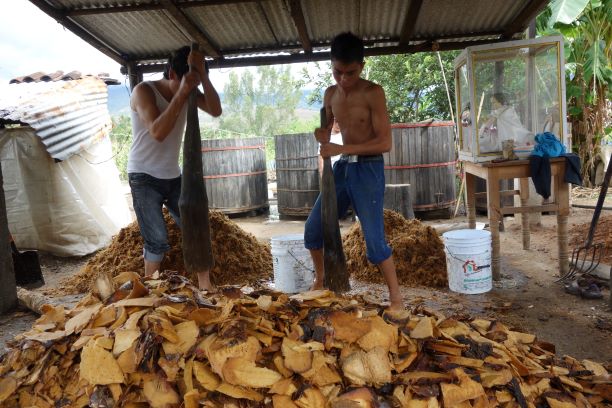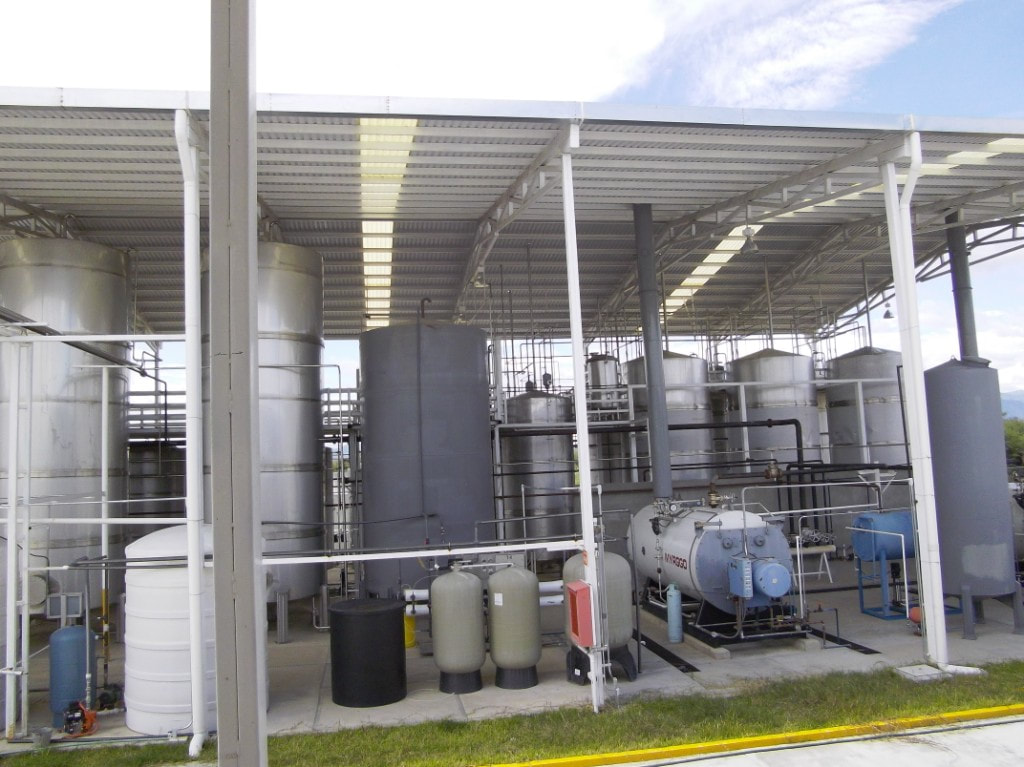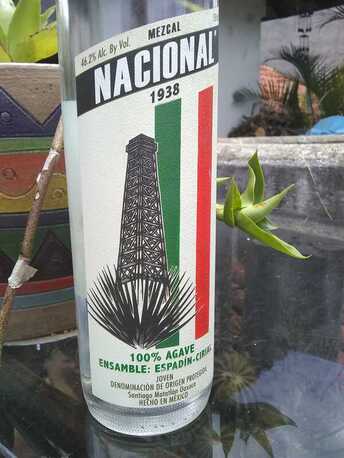|
Mezcal and Fair Trade
Alvin Starkman, M.A., J.D. Within the first couple of hours of leading a Oaxacan mezcal educational tour, two of the most commonly asked questions are, “what’s the difference between a mezcal ensamble, a mezcla and a blend,” and, “why do the palenqueros do mixes in the first place.” In this article I do my best to answer both questions, based on having been around agave distillates primarily in the state of Oaxaca for the past 30 years, and on a very frequent basis over the past couple of decades having spoken with tens of traditional distillers and their family members (who produce mezcal ancestral or artesanal) regarding such queries. Mezcal: An Ensamble, a Mezcla, or a Blend Many mezcal aficionados nonchalantly toss about the word “blend,” such as stating “oh, so it’s a blend of tobalá, madrecuixe and espadín.” There is certainly debate and disagreement amongst both the mezcal geeks/experts and the distillers (even from the same village) regarding nomenclature when it comes to mixing different species and sub-species to arrive at a desired end product. But there is, or at least in my opinion should be, a consensus distinguishing a blend on the one hand, from a mezcla/ensamble on the other. Blends are commonplace in the world of mezcal, but typically not in the world of artesanal or ancestral production. Think of a blended whisky. Take two or more finished products, blend them together, and you get, for example, Johnny Walker Red Label, a blended whisky (as opposed to a single malt). Now switch to agave distillates produced in the large modern factories in Oaxaca such as those en route to San Pablo Villa de Mitla or on the outskirts of Santiago Matatlán, just to name a couple of locales. These factories can and do buy large quantities of distillates from various sources, bring them to a central facility, blend them, and voilá we have blended mezcals. Or they can produce different batches at the same distillery, and then blend them together. The foregoing is an easy way to distinguish a blended mezcal from the others, regardless of whether we term them ensambles or mezclas. Now think of the mezcals commercially available through retailers in the US, Canada, the UK, and elsewhere around the globe. The labels typically include the word “ensamble” to identify a mezcal made from two or more distinct varietals of agave. Usually the piñas have been baked together, then crushed together and placed in a fermentation vessel, and finally the mosto as it’s known, is distilled. Thus, the mixing starts at the beginning rather than at the end. A variation on the theme is baking in different lots and/or the agave at different times, but then crushing and the rest, together. But some palenqueros state that the broad means of production should properly be termed a mezcla rather than an ensamble. And so the disagreement remains, and will likely continue into the relatively distant future. A few of my palenquero friends steadfastly maintain that it’s a mezcla when the mixing starts at the beginning, and an ensamble is what we (should) refer to as a blend. But what happens when those same palenqueros’ distillates are bottled, labelled and shipped abroad? The label pretty much invariably states “ensamble.” Why, one might ask, is there is such groundswell of disagreement between the two camps? Many of those imbibers in the English (and I suppose French) speaking world know the word “ensamble” but not the Spanish word “mezcla.” The word “blend” would never be used since to many it has a less than quality-product connotation. And so on the store shelf we find mezcal ensambles, and typically not mezclas. In my opinion we can use the words mezcla and ensamble interchangeably, just as tow-MAY-tow and tow-MAH-tow. Don’t get hung up on something akin to that which etymologists often disagree concerning. But do recognize the difference between blends on the one hand, and mezclas/ensambles on the other. Top Five Reasons Palenqueros Mix Different Varietals of Agave !. Several years ago a client asked one of my palenquera friends how she determined how much of each species she mixed together to arrive at her ensamble of six agaves. Her answer was rather simple, easy to understand and made an abundance of sense: “we brought one donkey-load of each type of agave to the palenque, and that’s how we decided.” Before the modern era of mezcal, which dates to no earlier than the mid-1990s more or less, foraging was the order of the day, and often regardless of what kind of agave was put in the oven and further processed, the end product was called just plain mezcal: not madrecuixe, nor tobalá; termed neither an ensamble or a mezcla. That’s what mezcal used to be. I recently purchased 10 liters from a neighbor who hails from a far-off village, some six hours away from the city of Oaxaca. Here in the state capital, specifically in our neighborhood, he flogs his villagers’ honey, coffee, and mezcal distilled in clay. He described the mezcal as made from maguey campestre, that is, agave from the countryside. It was just plain mezcal, produced as has been the case dating back hundreds if not thousands of years. There are still palenqueros who harvest whatever they can, from wherever they can, in as large quantities as time, distance and beast of burden allow. But these palenqueros are in the minority, rarely encountered by our readers, except those who want true far-off adventures to where one never knows what will be sourced; with what species of agave the purchase has been comprised. 2. The polar opposite of 1. above, is when a palenquero combines different types of agave because the ultimate taste is extremely agreeable to him. The corollary also sometimes comes into play. That is, he will refrain from mixing certain varietals together because the combination does not yield a good flavor. Typically, nose and finish do not enter the equation; taste rules. 3. The objective of many palenqeros is to completely fill as many fermentation vats as are to be used for the particular oven-load of baked, sweet, crushed agave. Often roughly a ton of the mash fills a wooden slat vat. While all is based on science, it is an art, a skill, which doesn’t always work out as planned. Sometimes, for example, eight tons of agave, one ton of each varietal, are baked together, then segregated with a plan to ferment one ton of each in a particular vat. But occasionally there is a bit left over from a couple of the species; the extra won’t fit into the vats for which each sub-species has been earmarked; That is, without seriously overflowing once water has been added and fermention begins in earnest. And so the palenquero will combine the excess kilos together into a vat, resulting in a particular mezcla which may never be repeated; unless of course it yields a particularly agreeable ensamble. 4. Sometimes a palenquero will combine two species of agave, in circumstances wherein one has a low sugar content, and the other much higher. The motivation is that this may result in a higher yield of the ultimate mezcal. 5. Finally, at least one palenquera friend is rather sensitive to what she is compelled to charge for mezcal produced from a particular varietal of agave, based on typical yield. She has explained to me that a mezcla sometimes is produced in a way that reduces the ultimate cost she must charge, yet retains much of the flavor of the more expensive (low carbohydrate content) type of agave. She used the example of combining tepeztate with some espadín in such a way that the end product still has a classic tepeztate taste, yet is not as expensive as it would have to be if she were to distill 100% tepeztate. So there you have it, my take on nomenclature, and what I have gleaned to date as to some of the reasons ensambles of mezcal and agave distillates are produced in the state of Oaxaca.
Alvin Starkman operates Mezcal Educational Excursions of Oaxaca (www.mezcaleducationaltours.com).
0 Comments
Leave a Reply. |
Archives
October 2022
Categories
All
|






 RSS Feed
RSS Feed
